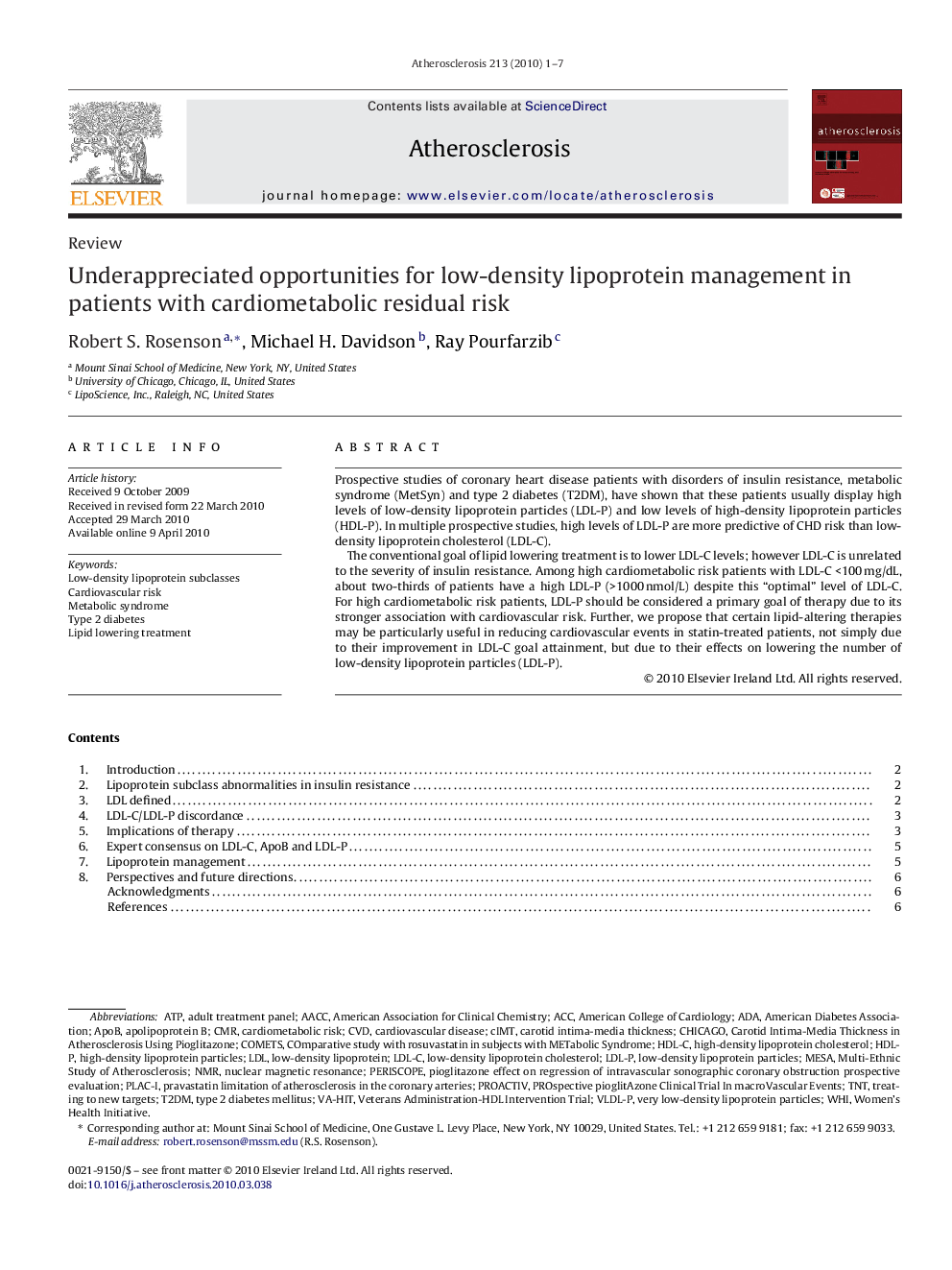| Article ID | Journal | Published Year | Pages | File Type |
|---|---|---|---|---|
| 2892978 | Atherosclerosis | 2010 | 7 Pages |
Prospective studies of coronary heart disease patients with disorders of insulin resistance, metabolic syndrome (MetSyn) and type 2 diabetes (T2DM), have shown that these patients usually display high levels of low-density lipoprotein particles (LDL-P) and low levels of high-density lipoprotein particles (HDL-P). In multiple prospective studies, high levels of LDL-P are more predictive of CHD risk than low-density lipoprotein cholesterol (LDL-C).The conventional goal of lipid lowering treatment is to lower LDL-C levels; however LDL-C is unrelated to the severity of insulin resistance. Among high cardiometabolic risk patients with LDL-C <100 mg/dL, about two-thirds of patients have a high LDL-P (>1000 nmol/L) despite this “optimal” level of LDL-C. For high cardiometabolic risk patients, LDL-P should be considered a primary goal of therapy due to its stronger association with cardiovascular risk. Further, we propose that certain lipid-altering therapies may be particularly useful in reducing cardiovascular events in statin-treated patients, not simply due to their improvement in LDL-C goal attainment, but due to their effects on lowering the number of low-density lipoprotein particles (LDL-P).
